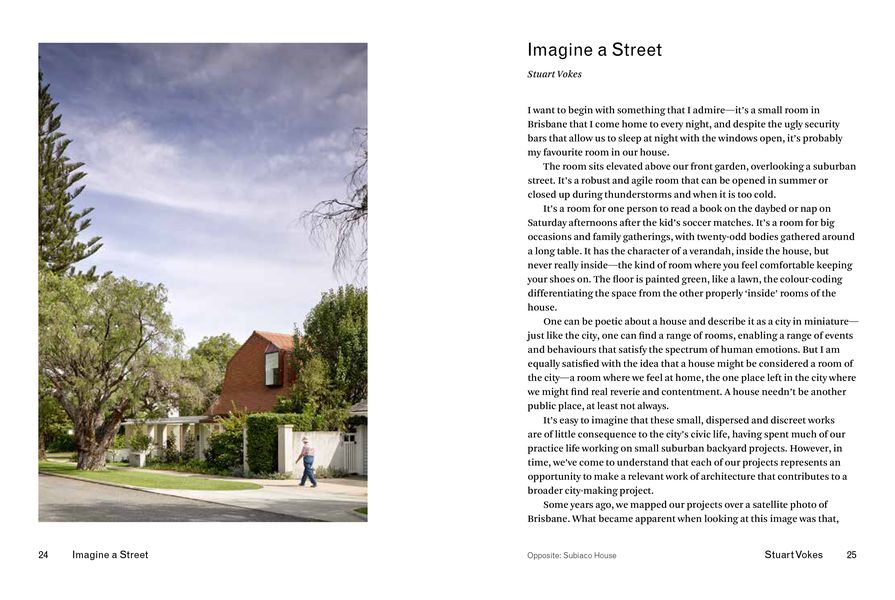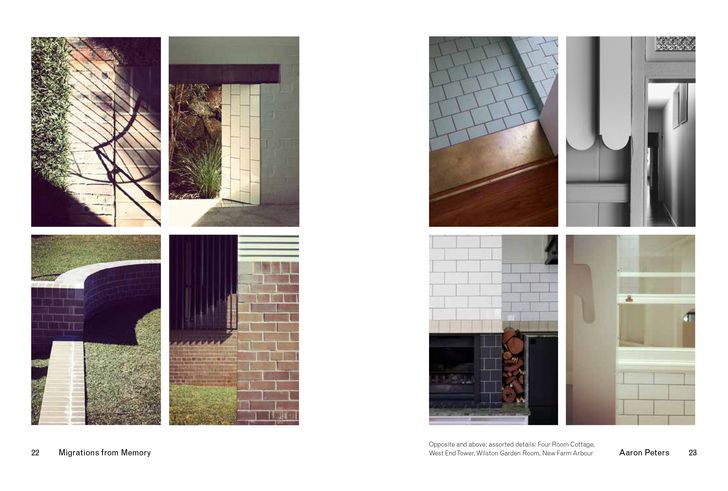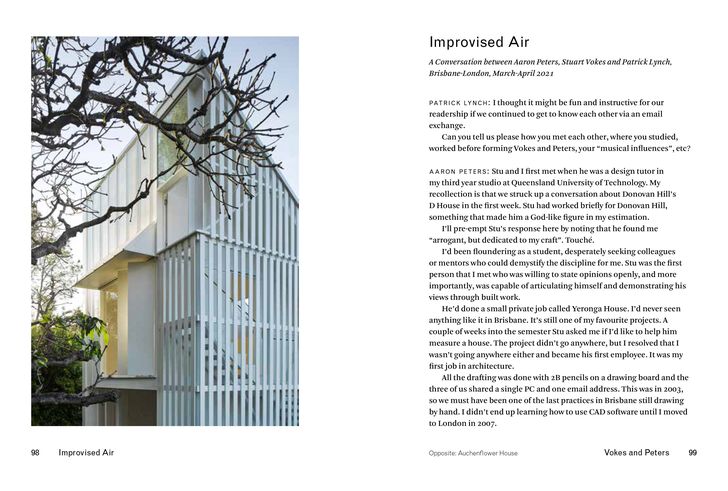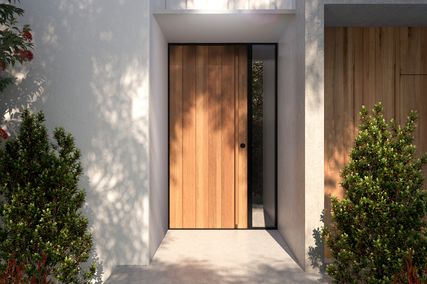In our contemporary design culture, dominated as it is by social media, books by practising architects are few and far between. Even rarer are books in which architectural design is discussed as passionately as it is in Migrations from Memory. Written by Stuart Vokes and Aaron Peters, founders of one of Queensland’s most dynamic firms, Migrations from Memory (Canalside Press, 2023) is a small book of unusual intensity that talks about an architectural tradition, its reinterpretation and its reinvention. It casts light on the practice’s twofold agenda: addressing design questions of global relevance while operating from a specific environment, the subtropical city of Brisbane.
With its anthological structure, Migrations from Memory performs many tasks at once: it’s a well of recollections; an ode to the intimacy of the house; a tool to systematize the constellation of ideas underpinning Vokes and Peters’ design thinking; and an opportunity to glimpse into the practice’s vast repertoire of architectural forms, solutions and construction details. It is also a parlour, where the authors discuss and share their romance with Brisbane – its design potential and opportunities – with London architect and publisher Patrick Lynch, and Norwegian/Australian architect and design icon Brit Andresen.
A spread from Migrations from Memory by Stuart Vokes and Aaron Peters.
Image: Vokes and Peters
The collection of short essays, conversations and contributions is interspersed by miscellaneous images that convey the intertwining of autobiographical notes and design thinking. These fragments are united by a solid narrative built upon notions and strategies that distinguish Vokes and Peters’ design approach, including the public role of private spaces in relation to city-making; the consideration of ordinary elements through critical adjustment; and the appreciation of collective memory as the cultural context of reference.
Peters’ description of an urban threshold found in a backstreet of Jodhpur in Rajasthan – poetically titled “Blue Room”– sublimates the practice’s notion of the public role of private spaces. With its spatial articulation and connection to the street, Blue Room inspired the porous living space of Vokes and Peters’ West End Tower (2012), as well as other domestic projects, including Central Avenue (2014) and Auchenflower House (2016). The architects’ inclination to merge private and public spheres into ambiguous spaces derives from their ability to respond to the context by embracing its people’s rituals and the building patterns and forms of the existing architecture. The book demonstrates the ambition of the practice to work at a small scale while pursuing large-scale effects, ultimately contributing to the collective endeavour of city-making.
As Vokes puts it, their motivation lies in the pleasure of the ordinary to be found in Brisbane’s neighbourhoods. The reinvention of the ordinary and the vernacular occurs through the process of critical adjustment. Based on observations and creative interpretations of elements, this process allows for incremental changes to existing types. Vokes and Peters find new names for these adjusted elements – the “vertical verandah” of Balmoral House (2007), for example, and Vokes’s “glossary for open space,” deployed to discuss their residential outdoor spaces.
A spread from Migrations from Memory by Stuart Vokes and Aaron Peters.
Image: Vokes and Peters
And if collective memory is the indissoluble relationship of people to their place, it is the stories detailing the houses’ occupation that interest the authors. The “visceral sensations” of place felt in old Queenslanders turn into “spatial memories” and ultimately into “spatial knowledge,” becoming design tools for reimagining Brisbane’s residential architecture. Valuing experience over convenience and cultural narratives over international trends, these transitions appear as novel inflections of familiar melodies, according to Peters.
Migrations from Memory marks a moment of maturity for the practice – a point of self-reflection along an ascending design journey. In A Scientific Autobiography, Aldo Rossi observed that at a certain point in one’s career, “one ought to have completed or begun something definitive, and come to terms with one’s own formation.”1 In Migrations from Memory, Vokes and Peters are found in that moment, processing their design experience in a time of transition as they embrace an increasing number of civic and public commissions.
Migrations from Memory is written by Stuart Vokes and Aaron Peters, published by Canalside Press. RRP $30.
- Aldo Rossi, A Scientific Autobiography (Cambridge, Massachusetts: The MIT Press, 1981)





















